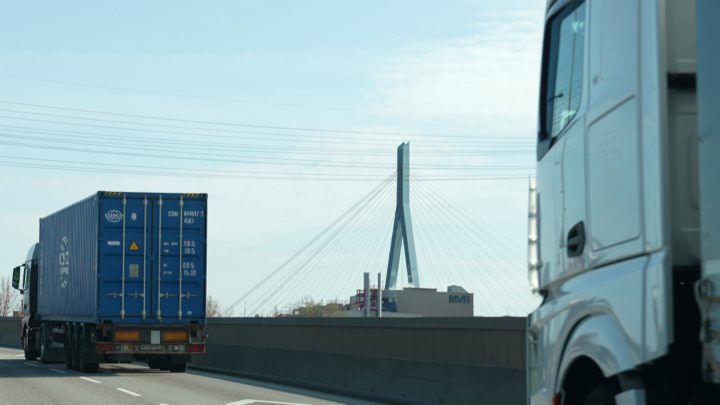
A smooth and efficient flow of daily port-related traffic, such as the clearance of goods, is also an important instrument to reduce emissions in ports, especially with the limitations for pollutants becoming stricter.
Streamlining such flows through bundling clearance activities in border inspection posts is also an important instrument, as it helps prevent unnecessary traffic in port-areas.
These were some of the results from the final Smooth Ports conference, held in Brussels.
The Smooth Ports project started in 2019 and focused on identifying measures and instruments to reduce CO2 emissions in ports. For this purpose, the Ministry of Economy and Innovation of the Free and Hanseatic State of Hamburg, the Port Authority Network Northern Tyrrhenian Sea, the Port of Nantes-Saint-Nazaire Authority, the Municipality of Monfalcone, the Regional Administration Varna, and Port of Hamburg Marketing, joined forces.
Ships also play a significant role as polluters. Here, too, Smooth Ports was able to identify a number of instruments to reduce emissions to a large extent. The provision of alternative fuels is an important factor in reducing emissions in ports. Additionally, one of the final conclusions was that the provision of onshore power supply (OPS) is becoming more important for the reduction of emissions in ports and in respect of upcoming legislation.
This was also underlined during a panel discussion with high-level stakeholders from the European Commission, DG Mobility and Transport, Unit Ports & Inland Navigation (DG MOVE), European Sea Ports Organisation (ESPO), and the Hamburg Port Authority (HPA) that was moderated by the Brussels Bureau of the business newspaper ‘Handelsblatt’.
HPA provided practical examples of what environmentally sensitive traffic management measures can be taken by ports when it comes to the optimisation of truck flows in the ports. One of the examples was ‘Mozart’ – traffic management with traffic signal control using quantum-inspired optimisation. The stakeholders from DG MOVE and ESPO addressed legislation and how the challenges can be tackled in Europe to fulfil the goals.
Shore power
The discussion also addressed the impending need to provide shore power to ships in ports. This is one of many issues where the chicken-and-egg problem is prevalent. This type of problem is due to barriers and drivers related to, for example, technology and operations, as well as institutional-, economic-, or stakeholder-related elements. From a port perspective, technical, policy and legislative, and business-related elements are examples.
With the Green Deal and stakeholder engagement in mind, of course the environmental aspect is important too. Legislation requires OPS to be offered starting from 2025, with further offerings by 2030. This is outlined in the Alternative Fuel Infrastructure Regulation.
An interesting discussion of the panellists after their keynotes then illustrated that the topics are rather complex, with a wide range of stakeholders involved in various kinds of daily port activities and along the supply chain.
The DG Move stakeholder, in his keynote, also pointed out that there is currently a lot of legislative revision ongoing at European Commission level. When looking at directives, examples can be found in addressing an alternative fuel infrastructure, combined-transport regulation, and the revision of the TEN-T framework.
Green deal
Regulations are revised regularly, but the ‘Green Deal’ concept presented by the president of the European Commission Ursula von der Leyen underlined the need to consider more recent developments and technological advancements in legislative texts and funding or leveraging tools of the European Commission.
The partnership presented the overall and individual results of the EU project. The Interreg Europe Joint Secretariat then also introduced the new Interreg Europe programme 2021–2027 after the project result presentations. The above-mentioned keynotes and the panel discussion on the topic of ‘sustainable port development and traffic management in European ports’ then rounded off the event.
Throughout the project lifetime, stakeholders from administration, port-related businesses, and logistics businesses along the supply chain were engaged to reduce emissions from port-related road traffic through improving regional policy instruments in a holistic manner.
The second day of the final conference was used to hold an internal partner- and steering group meeting, followed by a physical visit of the border inspection post at Port of Antwerp. From the Hamburg side, stakeholders from the Ministry of Justice and Consumer Protection joined the site-visit, as they are preparing the Hamburg ‘Border One Stop Shop’ project that brings all import and customs controls together at one location.
The Smooth Ports project continues to run until early 2023. Until then, the partners will continue to meet virtually, communicate with different stakeholder groups, and monitor the implementation of the action plans.